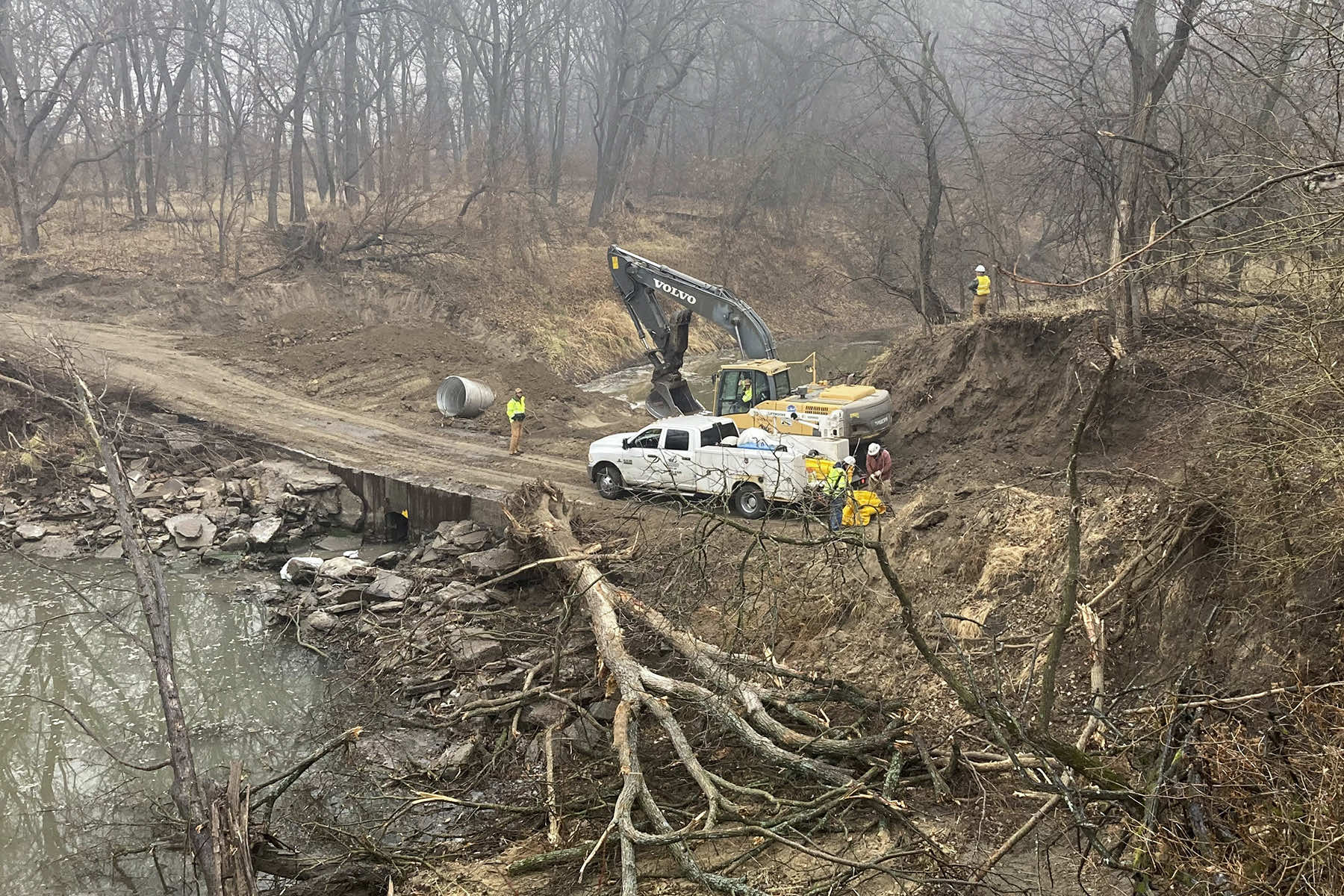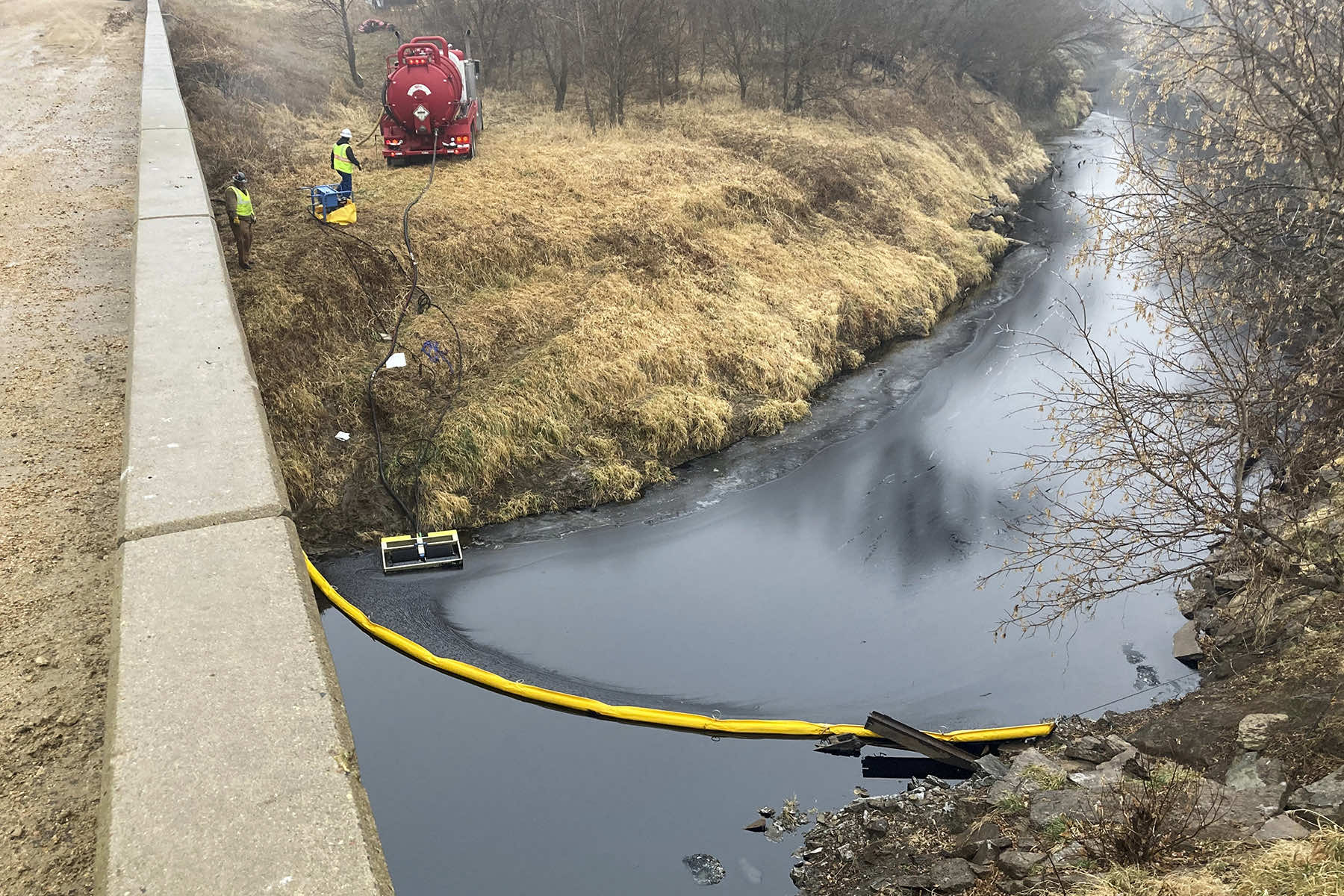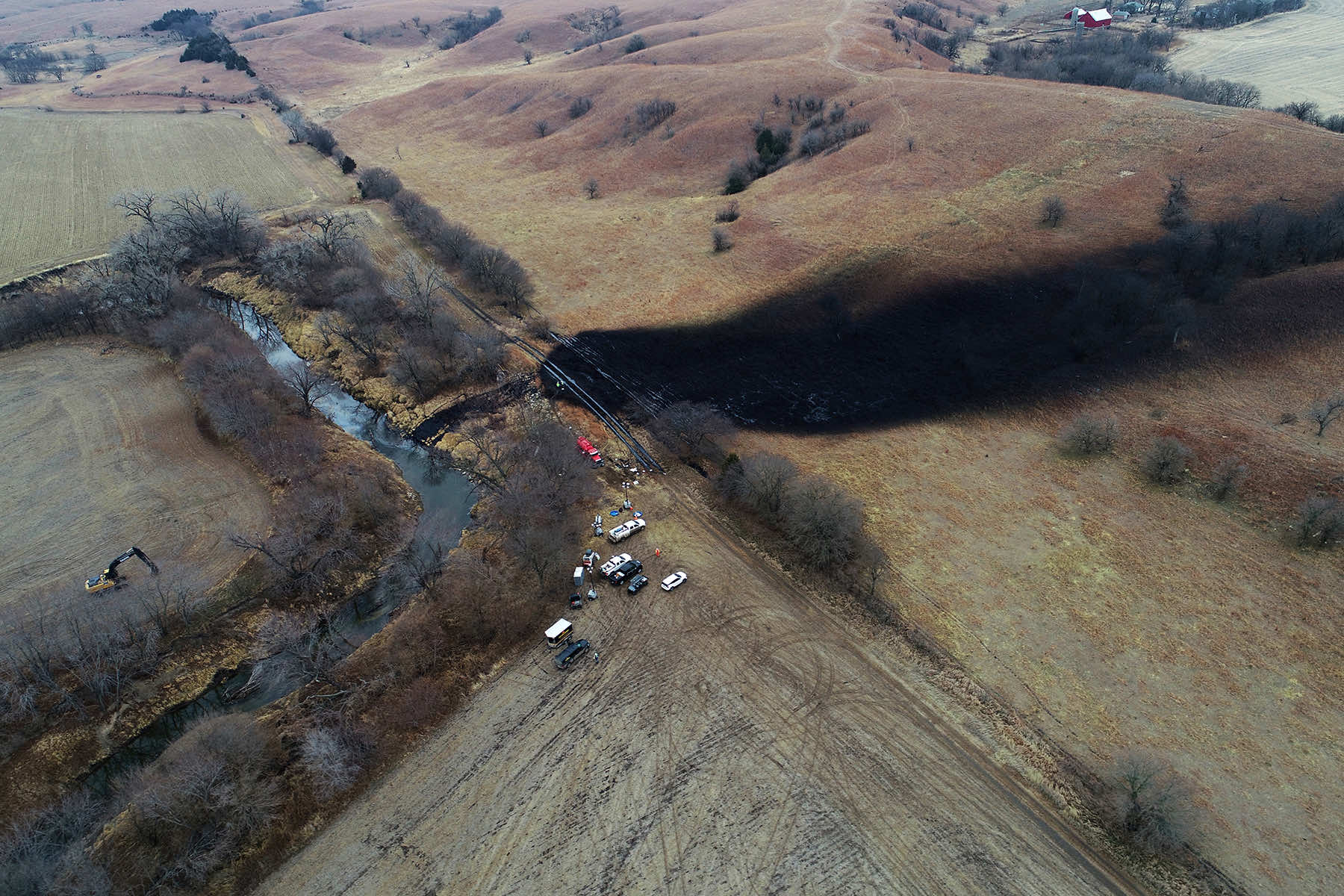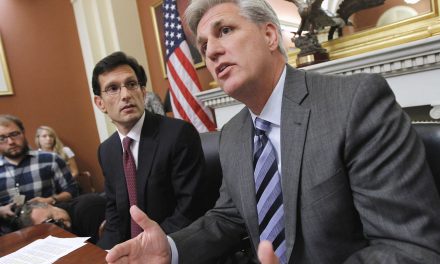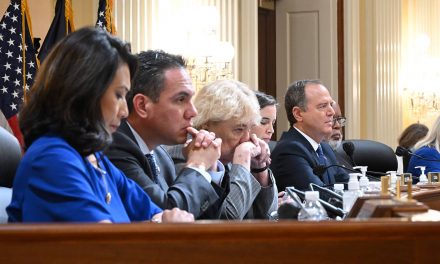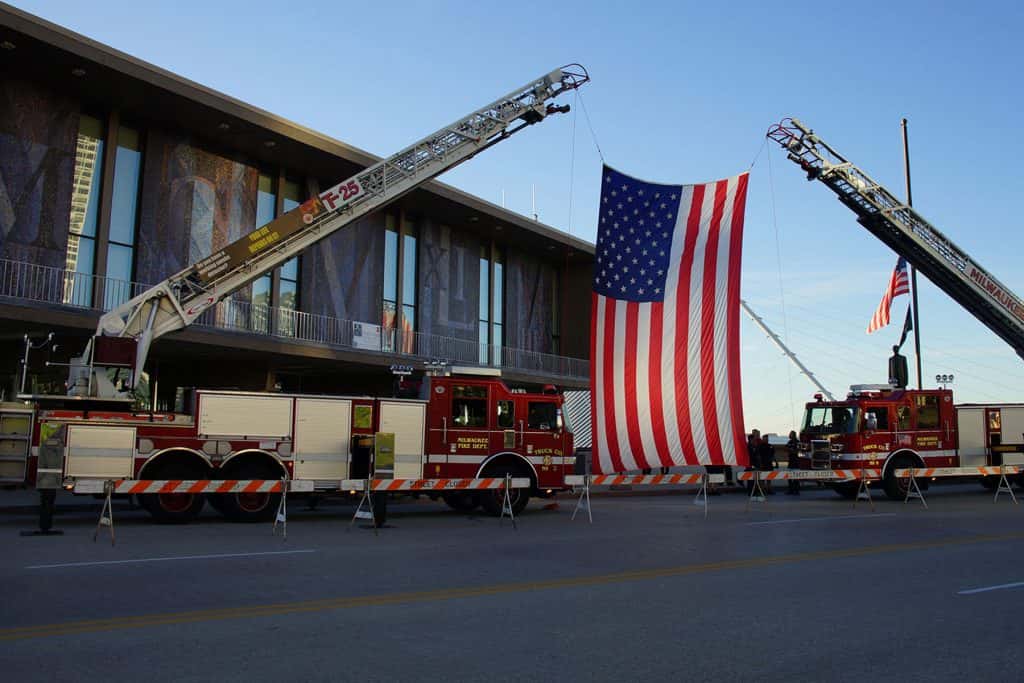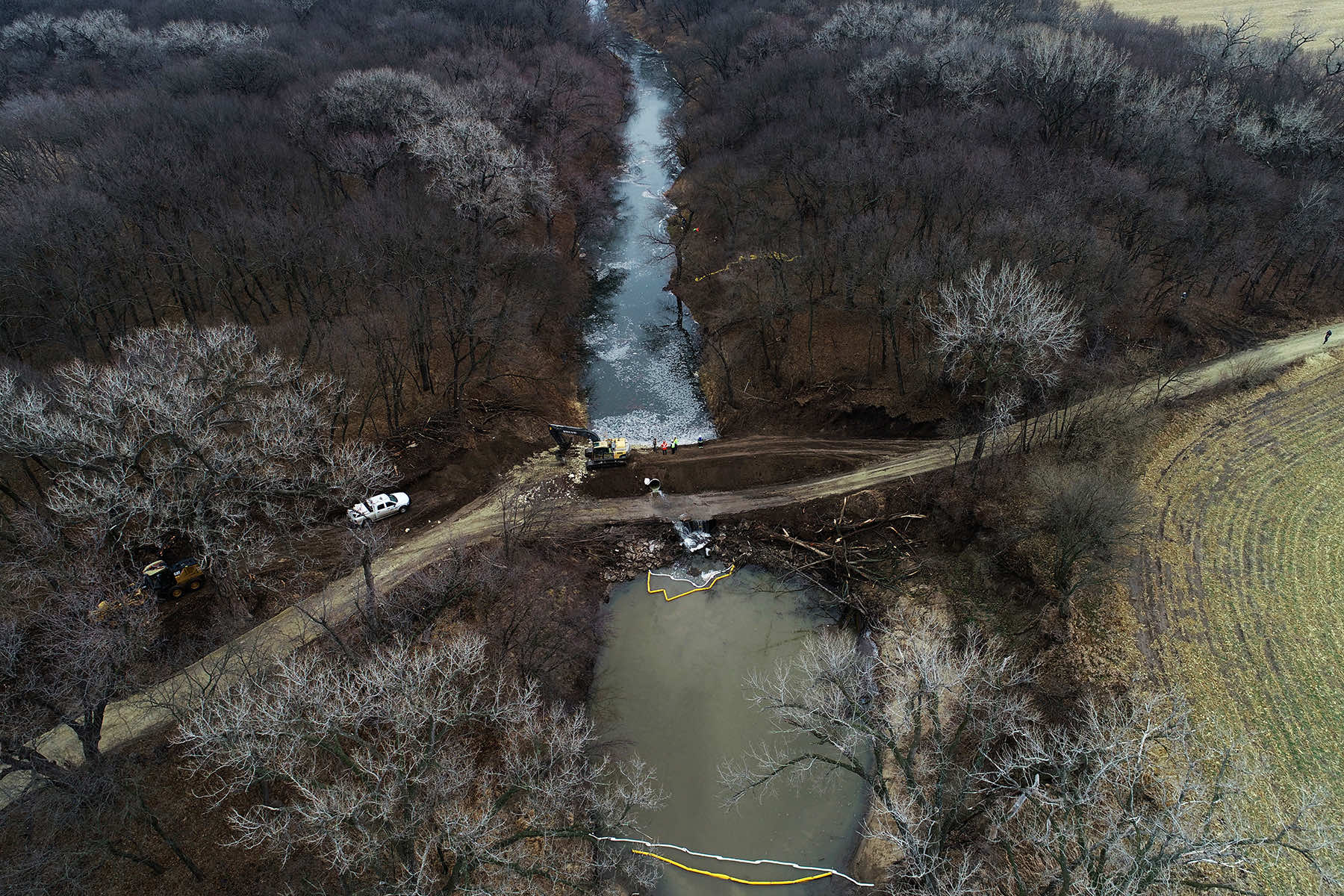
The Keystone Pipeline ruptured on December 7 near a creek in northern Kаnsаs, spilling what its operator, TC Energy, says is about 14,000 barrels of oil. This is equivalent to about 588,000 gallons, an Olympic swimming pool holds about 666,000 gallons. TC Energy says the leak is now contained.
This is the largest land-based crude pipeline spill in the U.S. in nine years. Although the Keystone Pipeline has leaked 22 times before this, this week’s spill is bigger than all the others put together. A spill in July 2010 was more expensive — costing more than $1 billion — because it affected the Kalamazoo River in Michigan.
The leak recalls arguments over the extension of the Keystone Pipeline, known as the XL Pipeline, that right-wing Republicans made a symbol of what they considered an antigrowth attack on U.S. energy production by Democrats.
A reminder: the Keystone Pipeline runs from oil sand fields in Alberta, Canada, into the United States and to Cushing, Oklahoma. It is fully operational. The XL Pipeline — the one that folks often confuse with the actual Keystone Pipeline — consists of two new additions to the original pipeline.
As planned, they would have added up to 1700 new miles. One addition was designed to connect Cushing to oil refineries in Texas, on the Gulf Coast. That section was built and started operating in January 2014.
The second extension is the one that caused such a fuss. It was supposed to carry crude oil from Alberta to Kаnsаs, traveling through Montana and North Dakota, where it would pick up U.S. crude oil to deliver it to the Gulf Coast of Texas. This leg crossed an international border, and thus the Canadian company building it needed approval from the State Department.
Frustrated by the U.S. government’s continuing focus on fossil fuels and worried that the Obama administration would approve the XL, climate change activists began to protest at the White House in August 2011. Likely recognizing the political danger of either approving or disapproving the permit, Obama tried to put it off until after the 2012 election, but congressional Republicans passed an order demanding a decision before it. Obama rejected the permit but let the company reapply.
Then–House speaker Paul Ryan (R-WI) called Obama’s decision “sickening.” “By rejecting this pipeline, the president is rejecting tens of thousands of good-paying jobs. He is rejecting our largest trading partner and energy supplier. He is rejecting the will of the American people and a bipartisan majority of the Congress.
If the president wants to spend the rest of his time in office catering to special interests, that’s his choice to make. But it’s just wrong. In the House, we are going to pursue a bold agenda of growth and opportunity for all.”
The XL was now a political football.
Climate activists continued to protest the extension of the pipeline, and in 2015, Obama rejected the XL. But, as Jamie Henn of 350 dot org, an organization dedicated to ending reliance on fossil fuels, recalled with irony, that was the same week that Donald Trump hosted Saturday Night Live on his road to the presidency. One of the first things Trump did in office was to speed up approval of the pipeline, which the State Department did in March 2017.
In the meantime, tensions were mounting over another pipeline that often got confused with the XL: the Dakota Access Pipeline (DAP). The DAP was a 1,172-mile-long pipeline from North Dakota to southern Illinois, traveling through South Dakota and Iowa and crossing under the Missouri and Mississippi Rivers, as well as under part of a lake near the Standing Rock Reservation of Lakotas, where Sitting Bull lived and was killed at the end of the nineteenth century.
Construction of the DAP began in June 2016, and at construction sites, protests escalated between workers and Indigenous Americans, especially the Lakotas, who had a long history of abuse at the hands of developers, whose water supplies were downstream from the pipeline, and whose sacred cultural lands were in its way.
The pipeline was on private land, but Lakotas pointed to the potential of oil spills to destroy their water supply on the reservation downstream, as well as the destruction of their sacred lands. Calling themselves water protectors, they defended cultural preservation and the protection of the environment on which culture depends.
Conflicts between the Indigenous protesters and law enforcement officers protecting the construction sites escalated until in September 2016, workers on private land bulldozed an area Lakotas claimed as sacred.
Security workers used attack dogs on the protesters who tried to protect the area, prompting the Departments of Justice and Interior to join the Army in issuing a joint statement to defend the right to protest and to ask the pipeline company to stop construction near Standing Rock until environmental impacts were clear.
But in October, law enforcement cleared the area. And on November 20, just four days after the other pipeline in the news — the Keystone Pipeline — leaked about 210,000 gallons of oil in South Dakota, police used water cannons on the protesters in freezing weather.
On February 22, 2017, after newly elected president Trump had signed an executive order permitting the construction of both the XL Pipeline and the Dakota Access Pipeline, the National Guard and law enforcement officers cleared the last of the protesters.
Construction of the DAP was finished in April 2017.
But despite Trump’s support for the XL, judges slowed the construction of that pipeline, citing the need for more information about its environmental impact. Then, as soon as he took office, Biden revoked the permit for the construction and five months later, TC Energy halted the project.
When oil prices skyrocketed after Russia’s invasion of Ukraine exacerbated the low oil production in place because of the pandemic, Republicans blamed Biden for killing the construction of the XL extension.
Now the U.S. has invested heavily in switching the United States to renewable energy with the Inflation Reduction Act, and a major oil spill resurrects concerns about the transportation of oil.
It is poetic timing. On December 9, as part of their yearlong investigation of the fossil fuel industry, the House Committee on Oversight and Reform released documents from executives at major oil companies revealing that they recognize that their products are creating a climate emergency but that they have no real plans for changing course.
DroneBase (AP)
Letters from an Аmerican is a daily email newsletter written by Heather Cox Richardson, about the history behind today’s politics

